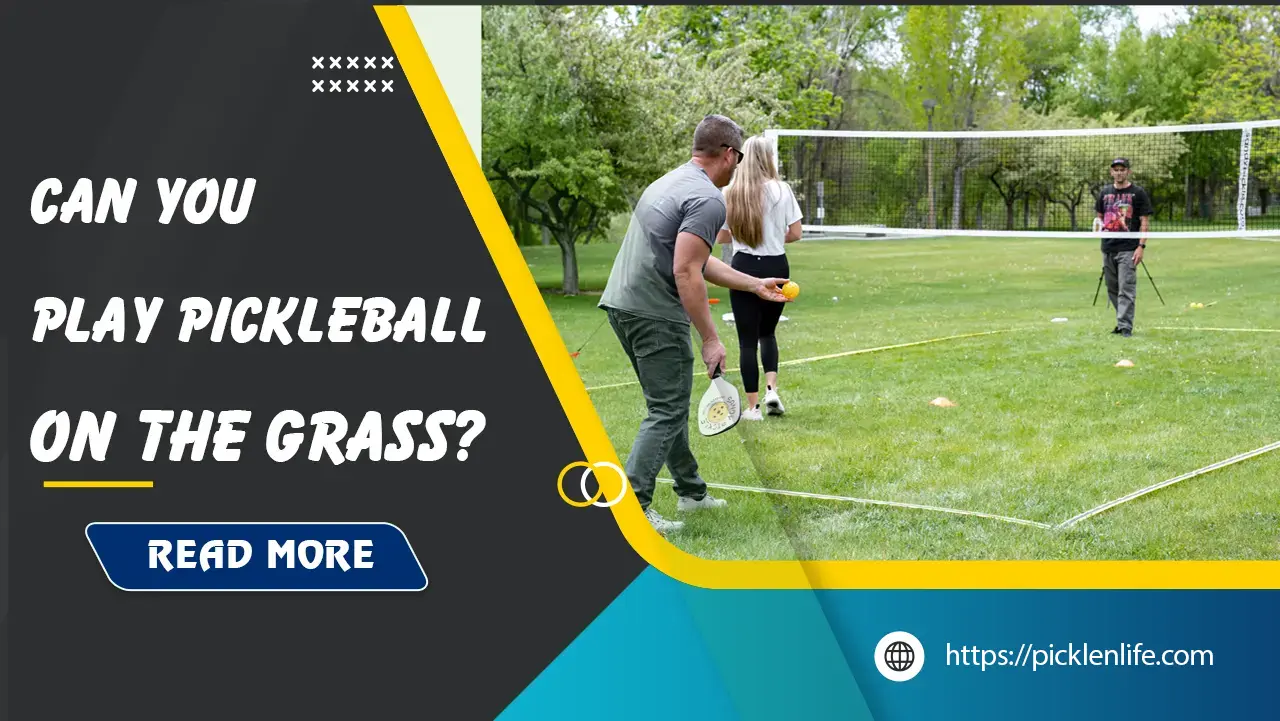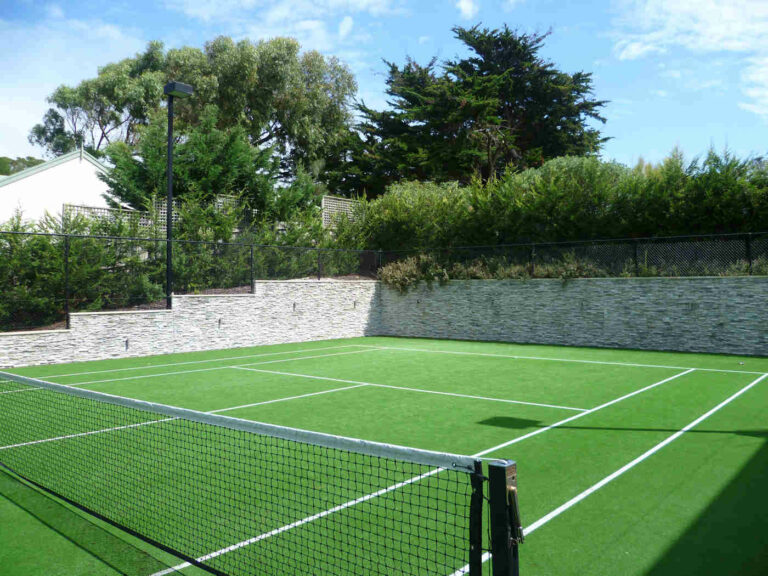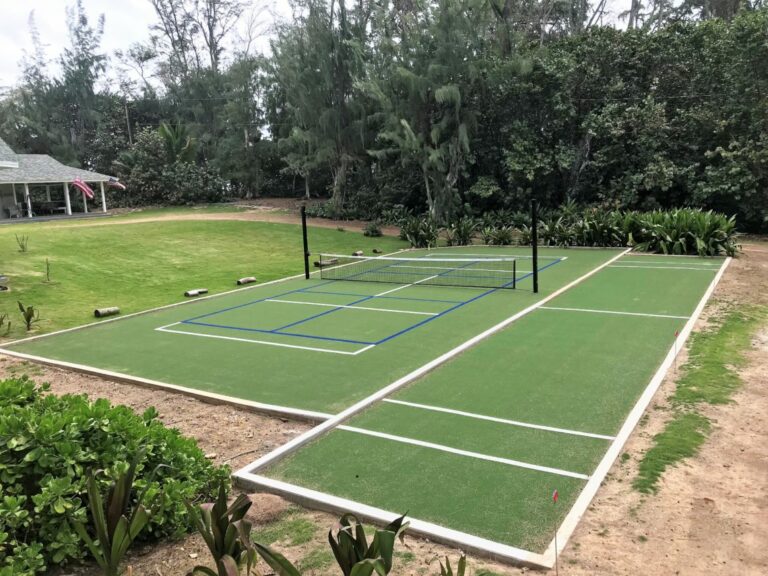Can You Play Pickleball on Grass? A Complete Guide
Playing pickleball offers a thrilling blend of strategy, skill, and fun. While the traditional setting for this sport is on hard courts, playing on grass is becoming an alluring option for many enthusiasts. Imagine the gentle sway of grass beneath your feet, the distant sound of laughter, and the vitality of being outdoors as you engage in this energetic game. Can you play pickleball on grass? Absolutely! However, stepping into this new game space requires understanding the unique dynamics that come with it. This guide will delve into the experience of playing on grass, exploring everything from setup and adaptations to safety concerns and equipment needs.

Can you play Pickleball on grass?
Yes, you can play pickleball on grass, although it comes with certain challenges and modifications. Many players enjoy the casual aspect of playing on grass, particularly in backyard settings. Playing pickleball on grass surfaces provides a myriad of benefits that can greatly enhance the grassroots experience of the game.
- Gentler on Joints: One of the most significant advantages of grass is its soft surface. Unlike hard courts that can punish joints after extended play, grass provides a cushioning effect. This is particularly helpful for older players or those with pre-existing injuries, enabling them to enjoy the game for longer periods without discomfort.
- Accessibility: Setting up a grass court is relatively straightforward and can be done in numerous locations from backyards to local parks. This accessibility empowers players to engage in spontaneous games without the need for fully equipped facilities. With just a portable net and some chalk or tape for marking boundaries, you can create a space for friendly competition or practice any day of the week.
- Different Playing Experience: There’s something inherently unique about playing on grass. It alters the game’s dynamics due to unpredictable ball bounces and slower speeds. Players must adapt their gameplay strategies, leading to the development of skills they may not enhance on traditional courts. Such variations can infuse excitement into every match, making for a fully engaging experience.
- Community and Family Environment: Playing pickleball on grass is often more laid-back, making it suitable for family gatherings or community events. The natural setting fosters a friendly atmosphere where socializing and enjoyment take precedence over strict competition. This creates an inviting environment for players of all ages, enhancing the overall sense of community.
- Cost-Effective Setup: Unlike the installation of hard courts, which can be expensive and time-consuming, grass courts are economically viable. You don’t need elaborate infrastructure just a well-kept patch of grass. This lower cost barrier makes pickleball accessible to more players looking to enjoy a fun, relaxed game.

Challenges and adaptations for grass play
While the allure of grass pickleball is evident, players must also prepare for unique challenges when transitioning from hard courts. The softer and more unpredictable surface can significantly impact gameplay, requiring adjustments in technique and strategy. Let’s take a closer look at the quirks of grass surfaces and how players can adapt their approach on this delightful natural canvas.
Understanding the grass surface
Playing on grass introduces a host of variables that diverge from the predictability of hard courts. The soft and uneven nature of grass naturally results in less bounce, meaning the ball will not rebound as high or with as much speed. This slower ball speed demands a different approach; players must anticipate lower and more unpredictable bounces, which can alter the rhythm of conventional play.
Furthermore, grass courts may present safety concerns, particularly if the terrain is uneven or damp. Players should be mindful of the potential for slipping and ensure that they choose spots where the grass is thick and stable. Awareness of the grass conditions whether it’s wet from dew or recently watered can greatly affect performance and safety during gameplay.

Adjusting your game: Footwork and shot selection
When transitioning to grass pickleball, players must modify their footwork and shot selection to navigate the new challenges effectively. Shorter steps and quicker adjustments are essential to maintain balance, especially when the grass is lush and can lead to unintentional slips.
Footwear plays a crucial role in ensuring safe and effective play on grass. Shoes designed with excellent traction can help players remain stable on the surface, preventing slips and falls. When it comes to shot selection, the emphasis should shift from power to precision. Skills like dinking and drop shots become increasingly effective as these tactics allow players to control the pace and placement of the ball more effectively, capitalizing on the grass’s slower bounce.
Equipment considerations: Balls, paddles, and more
Selecting the appropriate equipment can greatly impact the enjoyment and success of playing pickleball on grass. Some key equipment considerations include the type of balls used and the selection of paddles that suit grass conditions.
Outdoor pickleballs
When playing on grass, it is essential to choose outdoor pickleballs over their indoor counterparts. Outdoor pickleballs are typically constructed to handle various surfaces, offering better durability and a more consistent bounce on grass. They are designed to withstand the elements, ensuring a satisfactory playing experience even on a less-than-perfect surface.
- Outdoor pickleball options:
- Franklin X-40: Known for its impressive durability and consistent play.
- Dura Fast 40: Offers an excellent blend of weight and sturdiness, performing brilliantly on grass.
- Onix Fuse: Popular for its well-balanced design and predictable bounce, optimal for casual play.
Choosing the right pickleball paddle
Furthermore, selecting the appropriate paddle can enhance control and performance on grass courts. Many players may benefit from using paddles that offer a textured surface, promoting better grip and control on softer surfaces.
- Recommended paddles:
- Selkirk Amped: Known for its sweet spot and maneuverability, perfect for both finesse and power shots.
- PaddleTek Tempest Wave: Offers excellent control, thanks to its balanced weight and surface material.
- Engage Encore Pro: Provides a little extra pop and spin, beneficial for adapting to grass play.
By considering these equipment nuances, players can elevate their grass pickleball experience, allowing them to fully engage with the game without compromising performance.
Setting up and maintaining your grass court
Establishing a successful grass pickleball court requires thoughtful planning and maintenance. From choosing the ideal location to ensuring the court is kept in prime condition, several factors contribute to an enjoyable playing environment.
Choosing the ideal location
Finding the perfect spot for your grass court is crucial for a satisfying experience. A flat area with minimal wind interference will offer the best playing conditions. Ensure that you take into account the position of the sun during peak playing times to minimize glare and enhance visibility. Safety is paramount, so be sure to select a location free of obstacles, ensuring that players can concentrate solely on the game.
Marking court dimensions with precision
Marking the court accurately is essential for fair play. Use temporary materials such as chalk, tape, or spray paint to outline the key areas of the court. Common measurements for a pickleball court are 20 feet wide and 44 feet long, but it’s important to ensure that every line is straight and clearly visible.
- Methods for marking your court:
- Chalk: Easy to apply and remove, but may wash away with rain.
- Tape: Provides a more durable option, though it can be tricky to apply evenly.
- Spray paint: Offers a longer-lasting solution but requires careful consideration for permanence.
Net setup and height adjustments
Setting up a proper net is a fundamental aspect of establishing your grass pickleball court. The standard height for a pickleball net is 36 inches at the sides and 34 inches at the center. Many portable pickleball net systems are suitable for grass play, allowing for easy transportation and setup. Adjusting the net height to suit personal preferences can also enhance the playing experience, accommodating various styles of play.
Keeping your court in top shape: Maintenance tips
To maintain a playable grass court, consistent upkeep is required. Mowing the grass to a height that supports optimal ball bounce generally around one inch will help create a reliable surface. Regularly assess the court for uneven patches, filling in any holes that may disrupt play. Watering the court during dry spells will ensure that the grass remains healthy and supportive, further enhancing the overall playing experience.
Expanding the horizons of pickleball
As grass pickleball continues to grow in popularity, it opens up opportunities for social engagement, unique gameplay experiences, and broader community involvement. Let’s explore how this sport is bringing people together and diversifying how it is played.
The social side of grass pickleball: Fun for everyone
Grass pickleball offers a familial and inclusive atmosphere, making it an ideal option for gatherings and community-building events. The ease of setup encourages players of all ages and skill levels to join in the fun. Families can enjoy playful competitions in their backyards, creating lasting memories while engaging in physical activity and teamwork.
Many communities have already embraced grass pickleball, hosting casual social events that emphasize fun over competition, transforming the experience into one of togetherness. Stories abound of families coming together, laughing, and creating bonds through friendly rivalry on grassy courts, fostering a sense of community spirit.
Grass pickleball vs. traditional courts: A unique experience
Comparing grass pickleball to traditional court play reveals a world of differences. While hard courts provide consistent ball bounces and defined playing strategies, grass introduces a whimsical unpredictability that can be both challenging and refreshing. Players may find that grass courts favor different skill sets, rewarding finesse and control more than raw power.
For those accustomed to traditional gameplay, transitioning to grass may require an adjustment period, embracing the whimsical nature of the game. This shift provides an opportunity for expanded skill development, demanding agility and strategy in ways that hard courts may not.
Exploring sandy pickle: A new spin on the game
As an exciting evolution, sandy pickleball is another version of the game that merges elements of sand volleyball with traditional pickleball. It invites players to engage in a modified form of play designed for sandy environments while also incorporating grass court principles. The no-bounce rule and unique zones create an entirely different level of gameplay, encouraging players to adapt and innovate.
Sandy pickle’s rising popularity points to the creative direction that pickleball is taking, indicating increased opportunities for organized play and community events. Whether on grass or sand, this sport is engaging more players and expanding its reach.
Safety first: Playing pickleball on grass responsibly
While playing pickleball brings joy, it’s paramount to prioritize safety, especially on grass surfaces that may present unique risks. Understanding how to navigate various weather conditions and ensuring safe play practices will help mitigate injury and keep the game enjoyable for everyone.
Playing smart in various weather conditions
The weather presents a variable challenge for those looking to play on grass. Wet grass is notorious for being slippery, which can lead to falls and injuries. A good practice is to assess the condition of the playing surface before diving into gameplay. If the grass is soggy, it might be better to postpone the match or consider playing on alternative surfaces.
It’s equally important to emphasize proper footwear. Shoes with great traction can assist in maintaining balance and stability, reducing the risk of slipping on wet grass. On days when rain threatens to ruin outdoor plans, explore indoor alternatives or modify gameplay to accommodate the conditions.
Injury prevention and safe play practices
Ensuring a safe playing environment requires adherence to some general tips. Proper warm-ups are essential before engaging in any physical activity. Stretching and preparing the body can help to prevent strains and sprains. Moreover,
